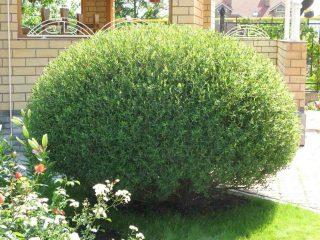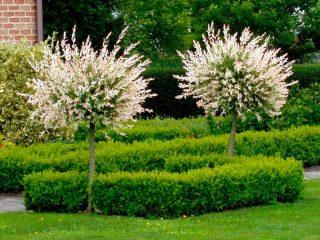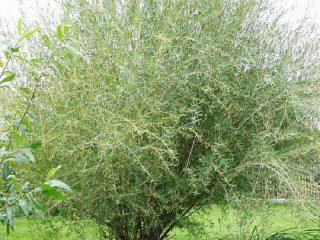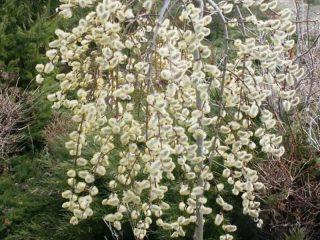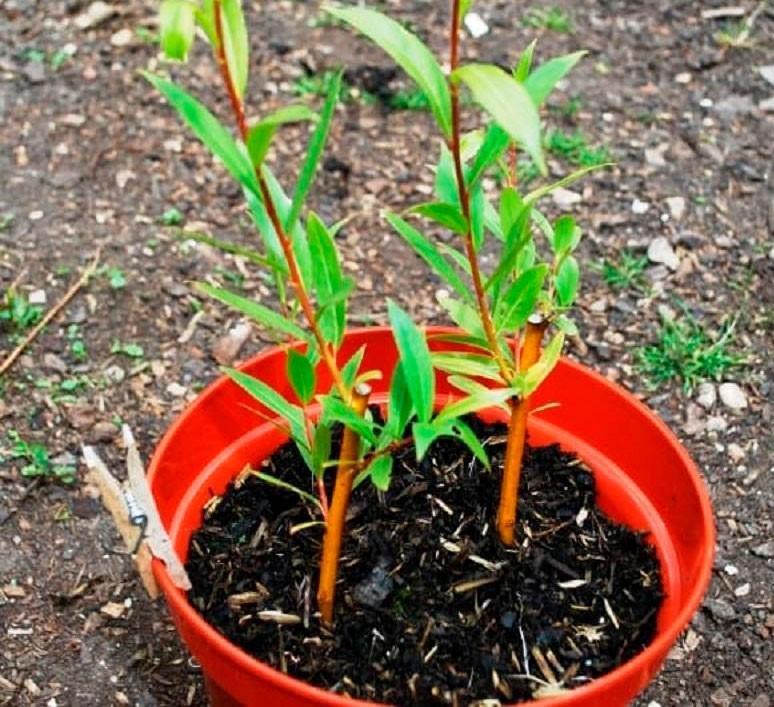Content
Purple willow is an ornamental crop originating from North Africa. Used by professional designers to decorate park areas, alleys and other public areas. Gardeners grow this plant to create hedges, thus protecting other plantings from the winds.
Description of purple willow
The plant received its name because of the shade of the foliage. Willow has a purple tint that looks most beautiful in the sun - when the rays are reflected from the glossy surface of the leaves. The length of the plates is 4-12 cm (depending on the variety).

The lifespan of purple willow is no more than 50 years
Purple willow blossom
Budding begins in the first ten days of March, less often in April. Then earrings appear on the branches, collected in large groups.
Sizes of purple willow
The plant is a medium-sized shrub, stretching 1-2 m from the ground. It has yellowish bark turning into bluish. The crown diameter of the purple willow is about 2 m; it grows more rapidly sideways than in height.
Types and varieties of purple willow
There are many varieties of purple willow. They have common characteristics: size, shape, color. However, some varieties are more similar to other species.
Nana
A small shrub about 1.5 m high and up to 2 m in diameter. The variety is characterized by a developed root system, thanks to which it stays in marshy soils.
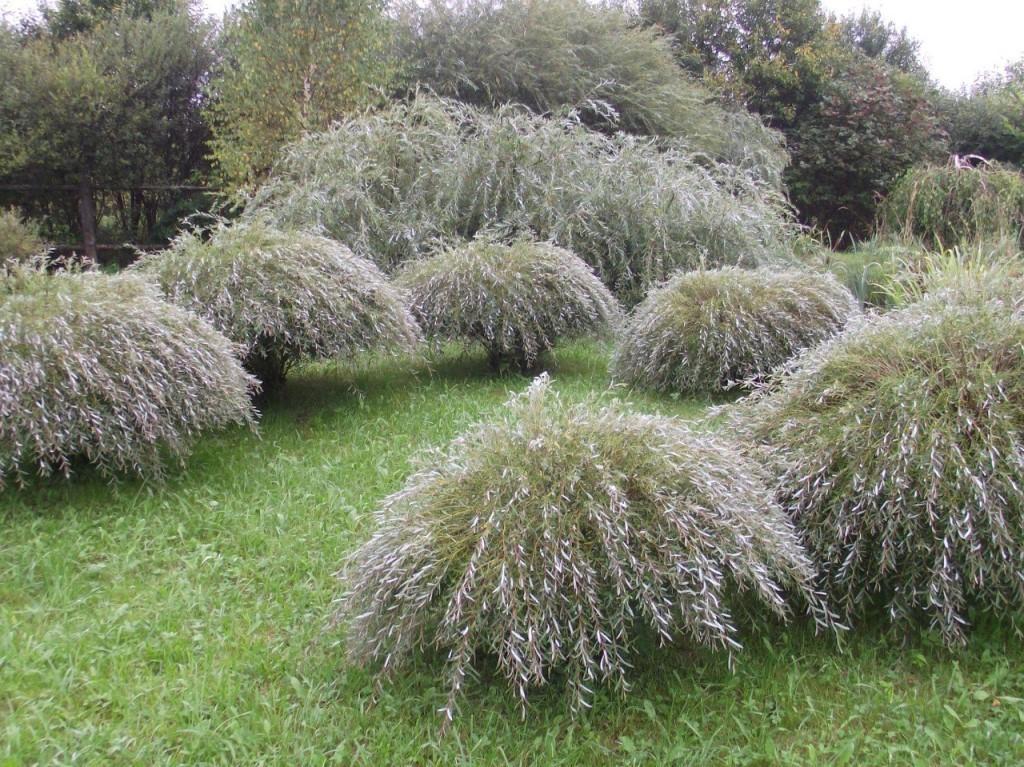
Flowering begins in late February or March and lasts until leaves appear.
Purple willow tolerates short-term droughts calmly. Botanists advise decorative pruning, as the bush grows quickly. The Nana variety can be grown on flooded substrates.
Pendula
Another small shrub, reaching no more than 1.6 m. It has bluish-green leaves and branches that can withstand severe cold. Purple willow has a spherical crown that can be trimmed to give a decorative shape.
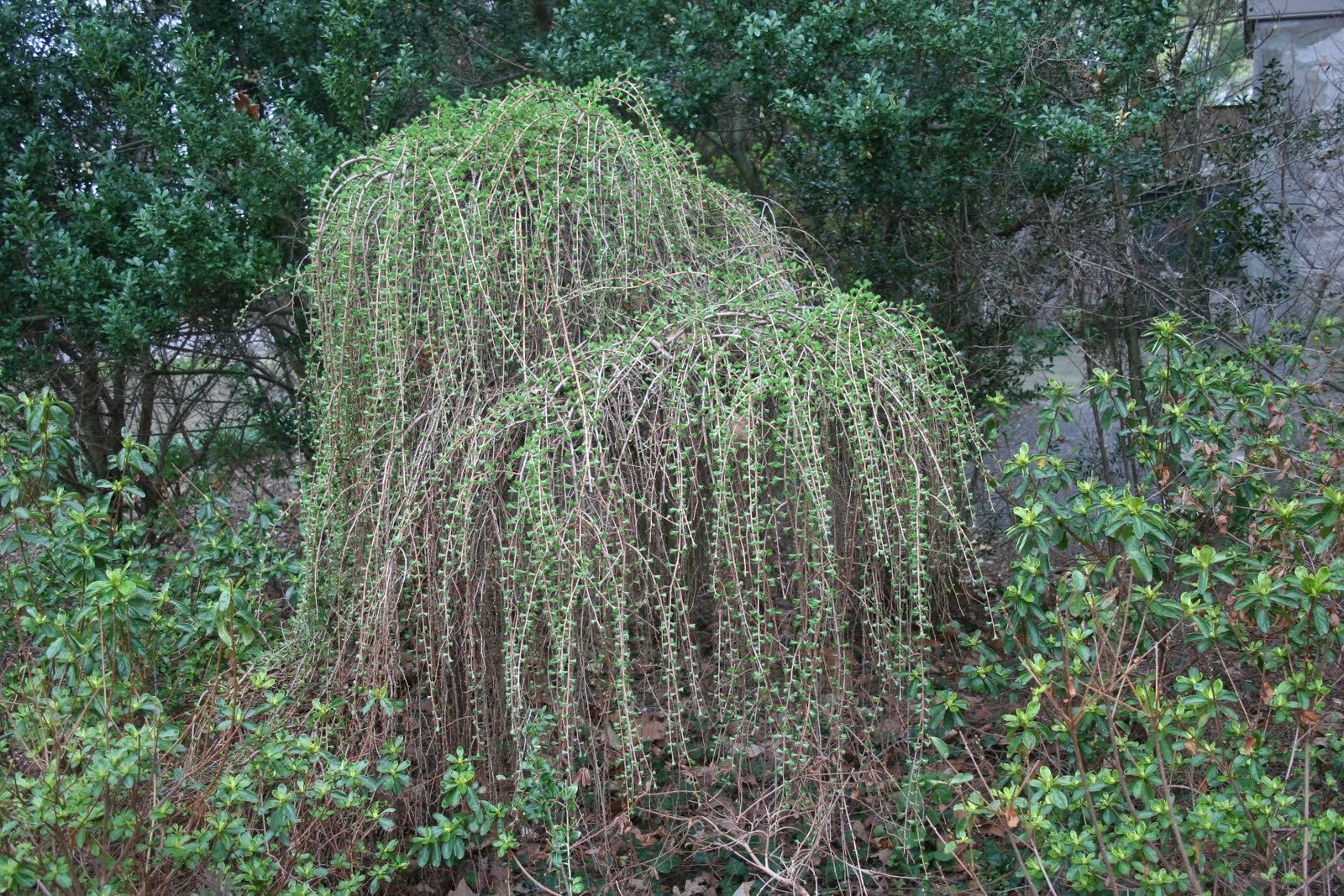
The plant is unpretentious, but when grown in shade, Pendula develops very slowly
Weeping
This type is the most common in Russia. Grows along coastlines.
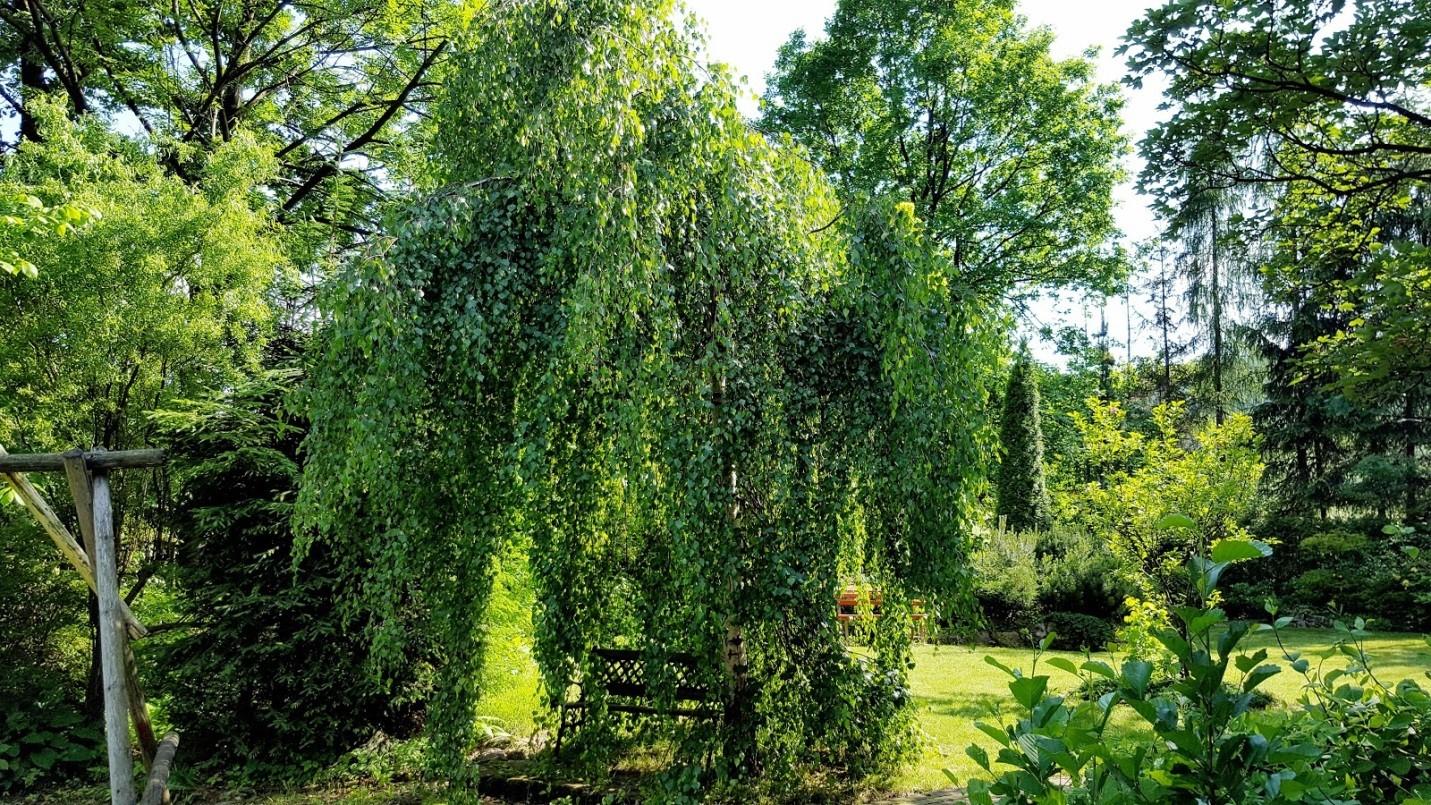
The crown of the weeping willow is made up of long leaves, often with jagged edges.
Gracilis
This purple willow is dwarf and barely exceeds 1 m. The variety is characterized by soft and small leaves. The shoots are thin and have a light green tint.
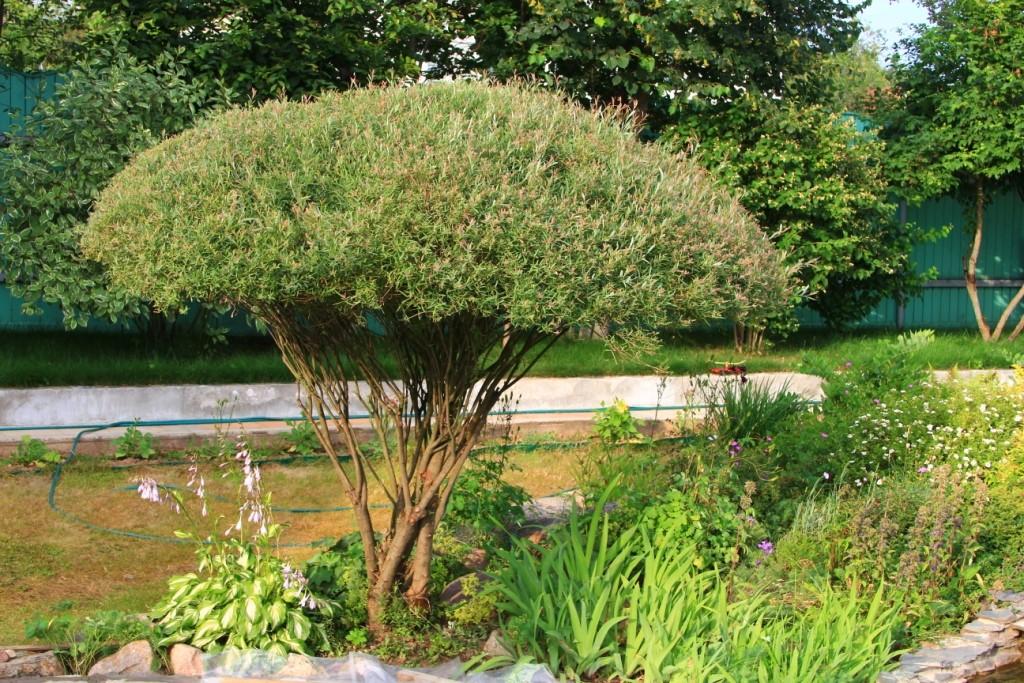
Gracilis can grow in light shade and light
Lighthouse
The purple willow variety gets its name from its branches that grow straight up. The culture has thin leaves with a green tint.
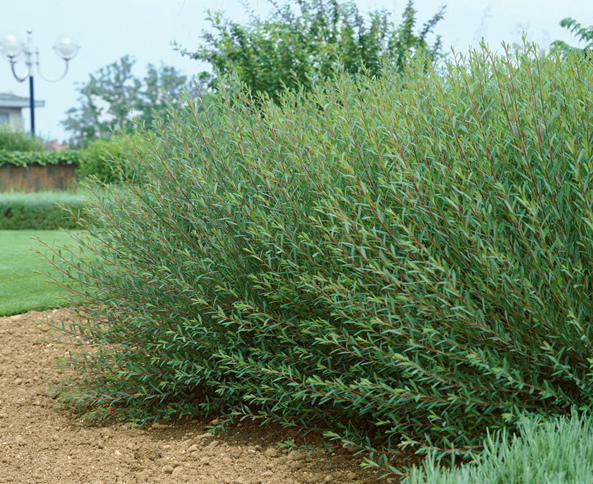
The variety is widespread in the southeastern part of Russia
Planting purple willow
Planting can begin in any month of spring and summer. The best period is March or April. The location for the purple willow should be bright; bright lighting is especially important for young seedlings that are just beginning to adapt to a new environment.
The next step is to prepare the soil. If purple willow is grown on a trunk and not as a hedge, specimens are planted at a distance. There is no need to plow the area. A hole (50x50 cm) is prepared for each seedling. When planting purple willow, it is important to take care of the drainage system, since despite the plant’s moisture-loving nature, rotting of the roots may occur.
A mixture of peat and nitrogen is suitable as a food additive. The seedlings are buried so that there is a place to store water - a pit.

After planting, the tree is watered with two buckets
Purple willow care
The culture does not impose special care requirements on the gardener. It grows successfully both in the wild and in the city. The pace of development will be faster if you follow the recommendations.
Watering and fertilizing
Purple willow can be a tree or a shrub - depending on the variety, the watering rate is calculated. Young seedlings require from 20 to 50 liters of liquid. Moisturize in the evening to reduce evaporation.
As for fertilizing, they are applied sparingly - no more than twice a year. Since fertilizer has already been placed in the planting hole, subsequent additives are used in the second or third year. Purple willow will need nitrogen in early spring. An excellent solution would be to water with a solution of nitroammophoska.
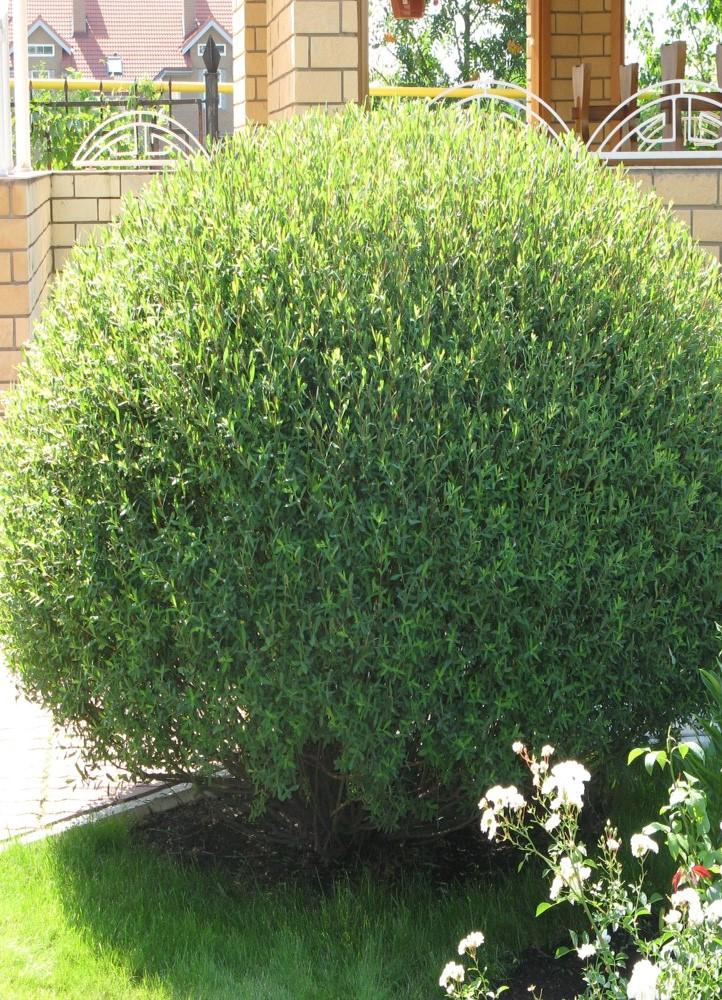
At the same time, the soil should be treated with Bordeaux mixture to rid the purple willow of pests
Purple willow pruning
The plant tolerates shaping haircuts well, which is what landscape designers use. A gardener can create any composition that comes to mind - a cube, a ball, a pyramid or something else.
Preparing purple willow for winter
Shrub varieties tolerate cold in the same way as tree varieties. Purple willow is winter hardy, so it does not need to be covered. The exception is young seedlings - they are protected with mulch and the trunk is wrapped in non-woven material.
Reproduction
Like other willows, purple varieties can be propagated by cuttings. This is the most popular method, which allows more than 95% of plants to root.
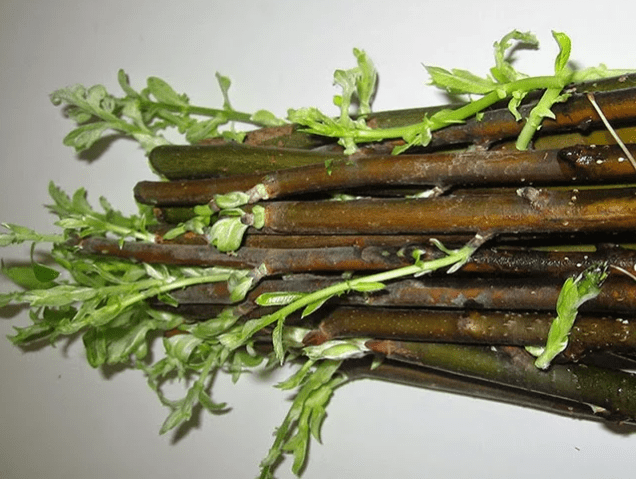
Planting material is collected in the spring, before the growing season begins.
To do this, use a sharp knife to cut off a part of the shoot 20 cm long. There must be at least five buds on the branch. The lower incision is oblique, the upper is straight. The cuttings are placed in a jar of water and wait for the roots to appear.Then the purple willow is planted in a nutrient substrate.
The cuttings can be placed directly into the container. In this case, the earth is mixed with wet sand, and the material itself is buried so that two buds remain on top. The sand should not dry out.
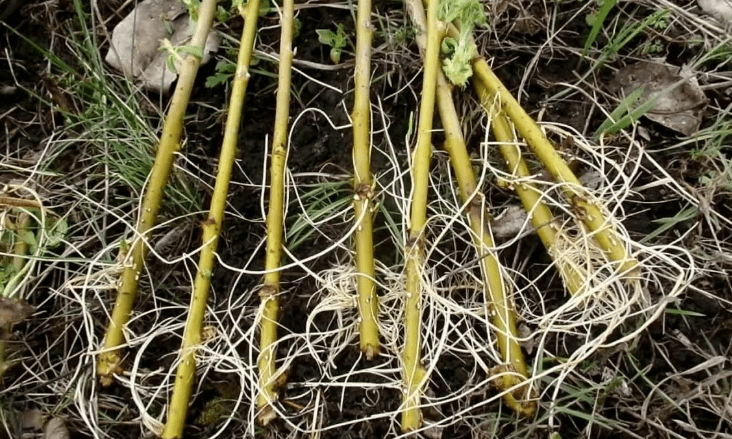
When the underground part gets stronger, the purple willow can be transplanted into the garden
Diseases and pests
The plant has innate immunity, which protects the seedling from attacks by pests and a number of diseases. In some cases, purple willow, or salix purpurea, is affected by scab and powdery mildew. You can prevent the appearance of fungus by adding Bordeaux mixture.
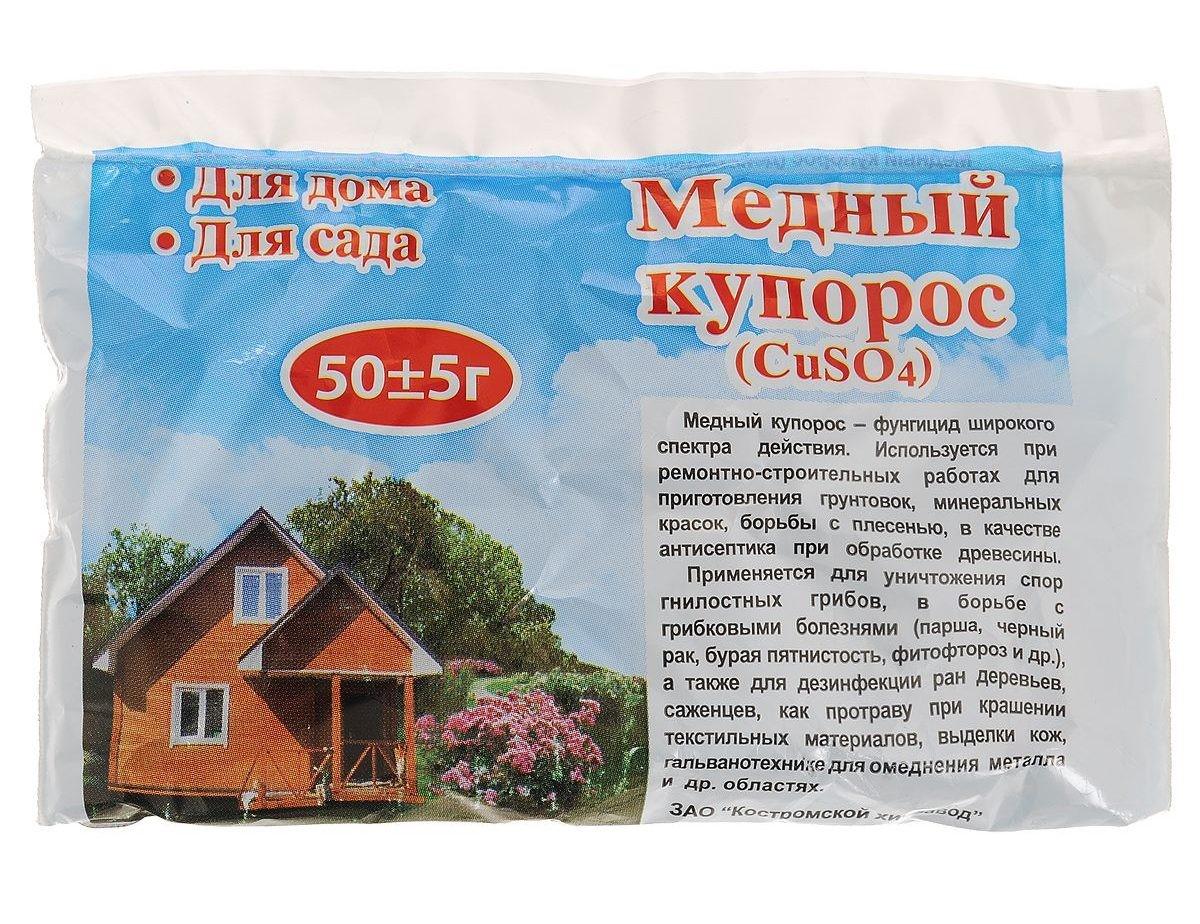
If the Bordeaux mixture does not give results, use copper sulfate in case of damage
Scab is an extremely dangerous disease that leads to necrosis of leaves. Damaged shoots must be removed immediately, and healthy shoots must be sprayed.
The purple willow also has enemies among insects - lupus, silkworms, and aphids. In small quantities they do not pose a problem. However, do not underestimate pests: in a few weeks they are capable of laying millions of larvae, which after hatching will not leave a green space on the bush.
The larvae are even more dangerous than adult insects. Therefore, when parasites are detected, you need to act decisively. Insecticides are a universal remedy, sometimes folk remedies help - soap with soda, vinegar, planting aromatic plants near the purple willow.
Ornamental willow can also be attacked by rodents. They are caught manually or using repellers.
Purple willow in landscape design
Very often the culture can be found in gardens and parks, where it is grown for decorative purposes.
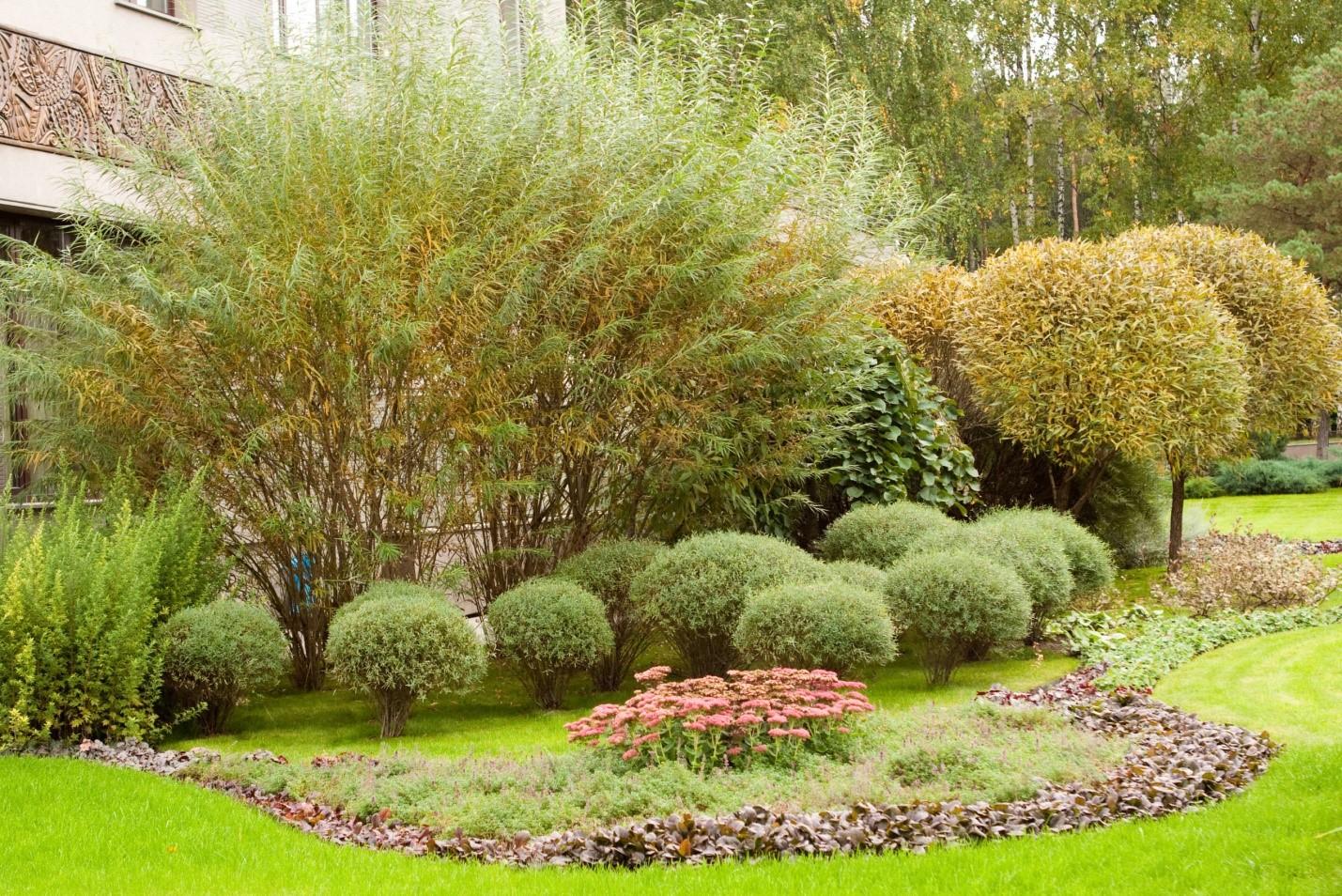
Willow is used in its natural form, sometimes making shapes from the crown
Dwarf varieties look great near flowers.
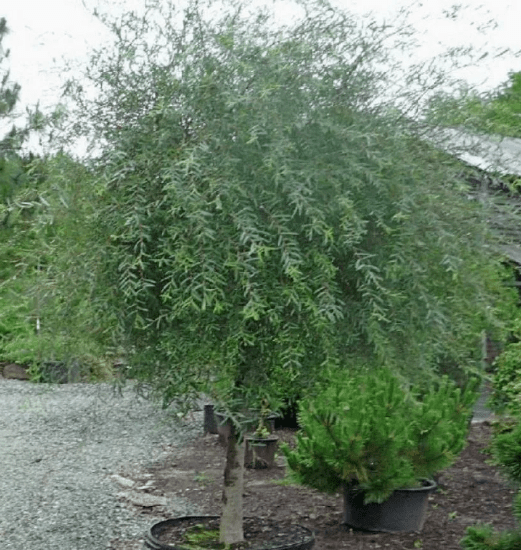
Crops growing on a trunk find a place on a bare lawn
Purple willow hedge
A common option for planting purple willow is as a hedge. In this case, the seedlings are placed close to each other.
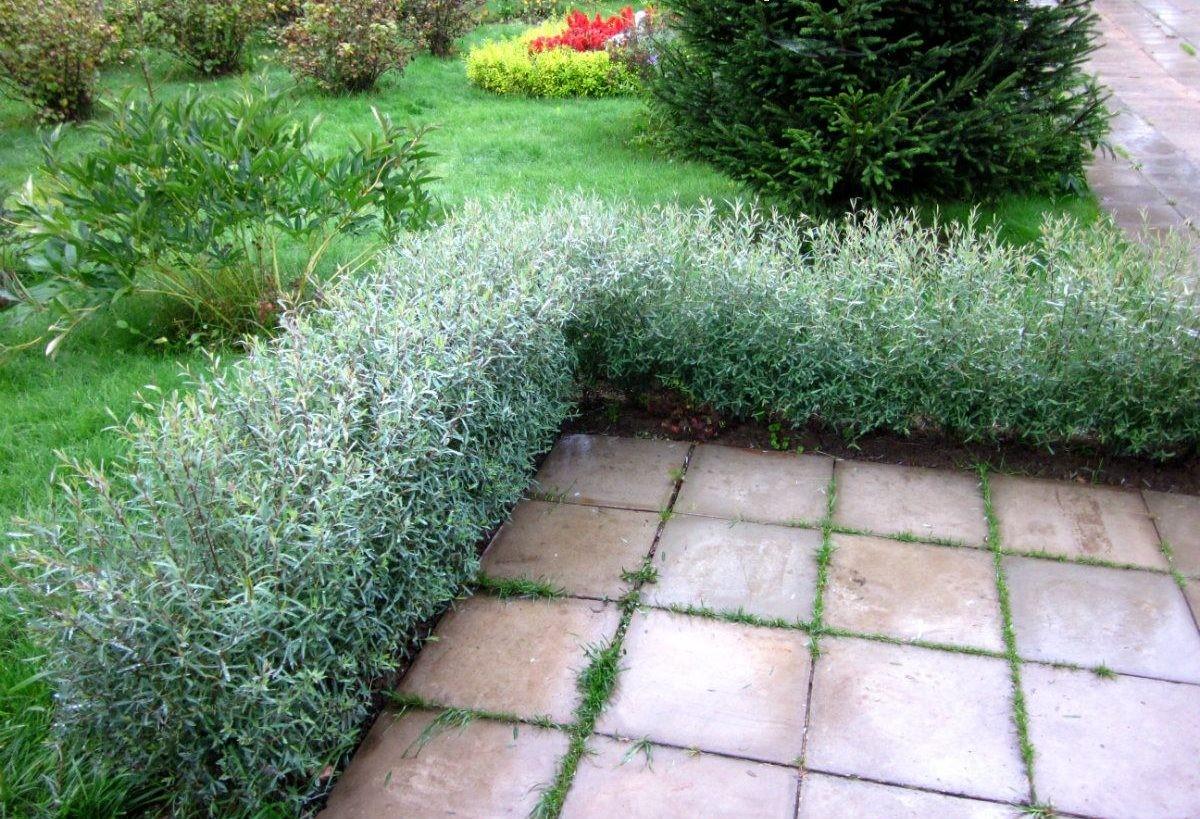
By the second season, the seedlings will unite into a full-fledged shrub and create a space-zoning barrier
Conclusion
Purple willow grows in many regions. Its favorite place is floodplains that are inundated during floods and floods. Landscape designers have found uses for both trees and shrubs. The former are usually planted in clearings to create an accent, and dwarf varieties are turned into hedges.
Reviews of purple willow
